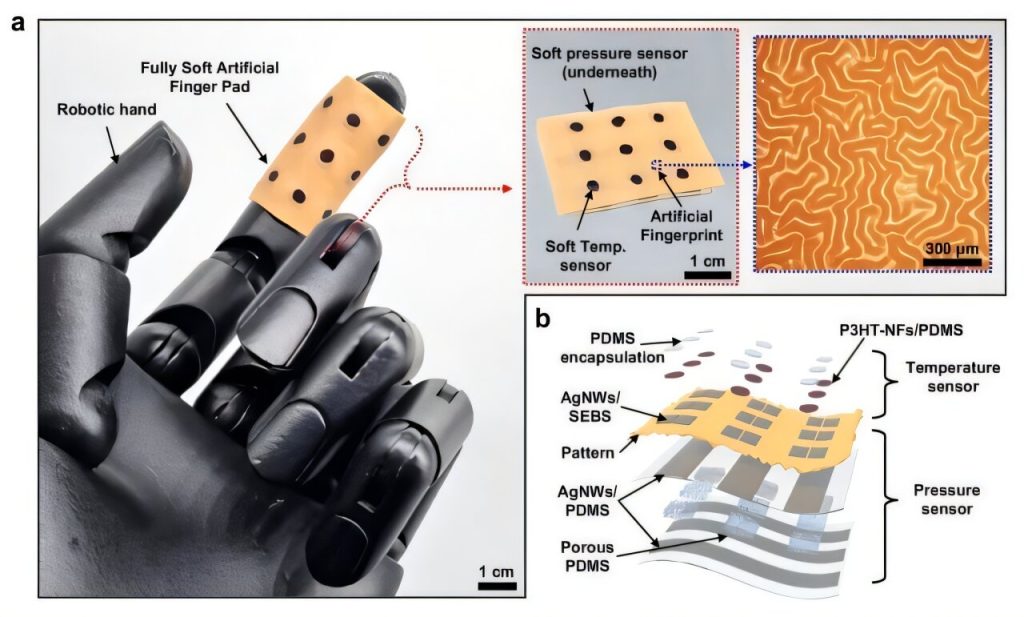In the fascinating world of technology, a groundbreaking innovation has emerged that takes inspiration from the uniqueness of human fingerprints. Imagine engraving these intricate patterns onto electronic skin to enhance security and identification capabilities. This new technology, developed by Professor Kyoseung Sim and his research team at UNIST, surpasses the complexity of human fingerprints, paving the way for advanced physical AI robots with fingerprint recognition abilities.
The key to effective electronic skin lies in its ability to sense touch while remaining flexible. This requires the use of flexible organic materials, such as styrene–ethylene–butylene–styrene (SEBS), which can mimic the functionality and patterns of human fingerprints. Professor Sim’s team devised a method to create random wrinkling patterns on SEBS electronic skin by chemically treating it and applying a solvent to induce wrinkle formation.
The probability of replicating these artificial fingerprints is incredibly low, making them highly secure and distinctive. When integrated into a robotic hand, this electronic skin allows robots to interact with their environment like humans, recognizing textures and avoiding hot objects. This technology has far-reaching applications in security, personalized electronic skin, soft robots, and human-machine interfaces.
This groundbreaking research, led by Professor Sim and his team, showcases the potential of SEBS wrinkling for identifiable artificial finger pad electronics, opening doors to a new era of advanced technology and innovation.


